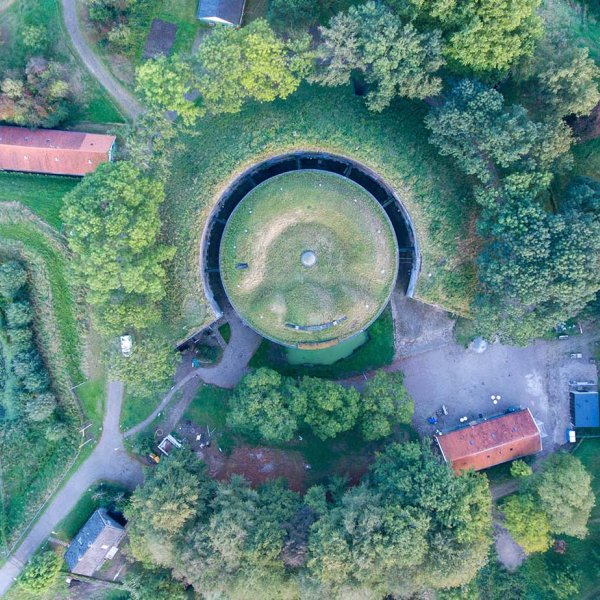
The Defense Line of Amsterdam
The landscapes surrounding the Defense Line
Anyone who follows the Defence Line of Amsterdam will pass through different types of landscapes. The fortification is 135 kilometers long and although it sometimes touches close upon urban areas, the Defense Line itself is always an oasis of tranquility. The landscape of this area ranges from grasslands, fields, lakes, rivers, peat bog, to sand and clay soils. On the dikes, you can find long rows of poplars that have been planted. In addition, there are special plants and herbs that naturally grow around the fortresses.
The plants and trees used to be important for the military. The trees served as camouflage or would be of importance as fuel in the event of mobilization. Hedges of hawthorn and roses served as natural barbed wire. The meadows around the fortresses and dikes could be put under water in a short time thanks to the many waterways that are present around the Defense Line. The Defense Line of Amsterdam and the surrounding nature is largely the habitat of birds, bats and rodents.
History, culture and nature
You can bike, rollerblade or hike along the Defense Line of Amsterdam. You will pass as many as 42 fortresses, many beautiful villages as well as many nice panoramic views. The beauty of the Defense Line of Amsterdam is threefold; you can get a taste of the history, the culture and the nature of the area in one place.
Many of the fortresses of the Defense Line of Amsterdam have been arranged for other purposes and are currently used as museums or studios for artists. Further along the 135 kilometer long route, there are bird hides, mansions, parks, water recreation facilities and many beautiful villages. The temptation is great to experience the ambience of these historic villages from a terrace while enjoying a cup of coffee and a fresh apple pie.
